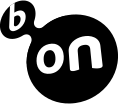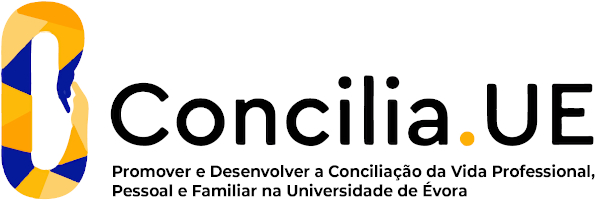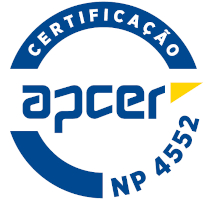2024
Tourism Economics
Name: Tourism Economics
Code: ECN13847L
6 ECTS
Duration: 15 weeks/156 hours
Scientific Area:
Economy
Teaching languages: Portuguese
Languages of tutoring support: Portuguese, English
Regime de Frequência: Presencial
Presentation
x
Sustainable Development Goals
Learning Goals
"Tourism Economics", taught to students in the first year of the degree in Tourism, is an introductory course that aims to emphasize the principles, concepts and elementary models of economic theory, in a perspective of application to the Tourism sector. The course provides fundamental knowledge of Economics and analytical instruments that will allow students to analyse the reality, phenomena and concrete problems of daily and professional life according to the fundamental principles of Economic Theory. It also aims to encourage students to identify and present solutions to real problems, based on economic theory, particularly in the sector in which they will develop their profession.
Contents
1. ECONOMICS AND TOURISM
2. THE SERVICE PROVIDED IN THE TOURISM SECTOR
2.1. Concept of Product
2.2. Homogeneous and Differentiated Products
2.3. Tourism and composite goods
3. DEMAND AND CONSUMER DECISION
3.1. Basic Elements of Demand
3.2. Demand Elasticity
3.3. Consumer Decision
4. SPECIFICITIES OF TOURISM DEMAND
5. SUPPLY AND PRODUCER DECISION
5.1. Basic Elements of Supply
5.2. Supply Elasticity
5.3. Producer Decision
6. SPECIFICITIES OF TOURISM SUPPLY
6.1. Economic Activities Involved
6.2. Tourism Supply Elasticity
7. MARKETS
7.1. Market Structures
7.2. Market Failures
7.3. The Role of the Government
8. TOURISM MARKET
8.1. The Relevant Market
8.2. Market Structures
8.3. Public Goods and Tourism
9. TOURISM: ECONOMIC IMPACTS
2. THE SERVICE PROVIDED IN THE TOURISM SECTOR
2.1. Concept of Product
2.2. Homogeneous and Differentiated Products
2.3. Tourism and composite goods
3. DEMAND AND CONSUMER DECISION
3.1. Basic Elements of Demand
3.2. Demand Elasticity
3.3. Consumer Decision
4. SPECIFICITIES OF TOURISM DEMAND
5. SUPPLY AND PRODUCER DECISION
5.1. Basic Elements of Supply
5.2. Supply Elasticity
5.3. Producer Decision
6. SPECIFICITIES OF TOURISM SUPPLY
6.1. Economic Activities Involved
6.2. Tourism Supply Elasticity
7. MARKETS
7.1. Market Structures
7.2. Market Failures
7.3. The Role of the Government
8. TOURISM MARKET
8.1. The Relevant Market
8.2. Market Structures
8.3. Public Goods and Tourism
9. TOURISM: ECONOMIC IMPACTS
Teaching Methods
Teaching and learning methodologies include theoretical-practical classes (theoretical exposition, practical exercises, discussion of real examples of companies and markets) and also the empirical study of tourism products chosen by the students, with extensive support in digital resources.
These methodologies closely follow the UE pedagogical model:
- Carrying out an empirical study by students (organized in small groups) allows the development of transversal skills (such as collaborative work), providing teaching centered on student learning.
- Continuous monitoring by the teacher allows the work path to be aligned with the syllabus and contributes to the development of students' self-regulation learning skills.
- Carrying out the work encourages relationships with the community, particularly with tourist companies in the region.
These methodologies closely follow the UE pedagogical model:
- Carrying out an empirical study by students (organized in small groups) allows the development of transversal skills (such as collaborative work), providing teaching centered on student learning.
- Continuous monitoring by the teacher allows the work path to be aligned with the syllabus and contributes to the development of students' self-regulation learning skills.
- Carrying out the work encourages relationships with the community, particularly with tourist companies in the region.
Assessment
Assessment/ Evaluation:
A) Continuous assessment regime
• Three individual written tests (mini-tests) with a total weighting of 75% (25% each test) in the final grade;
• Group work (each group must have a maximum of 3 students), with a weighting of 25% in the final grade. The group work focuses on a tourist product (or a territory) and must include the characterization of the product, as well as its demand and supply; the identification of the relevant market and the respective market structure; and also a brief analysis of the impacts of the tourism product on the economic and social development of the region. The oral presentation must have a graphic support (slides or other materials) that will also be evaluated.
B) Final evaluation / exam regime
• Individual exam test, which classification corresponds to the final grade (for students who have done the group work, the exam has a weight of 75% and the work 25%).
A) Continuous assessment regime
• Three individual written tests (mini-tests) with a total weighting of 75% (25% each test) in the final grade;
• Group work (each group must have a maximum of 3 students), with a weighting of 25% in the final grade. The group work focuses on a tourist product (or a territory) and must include the characterization of the product, as well as its demand and supply; the identification of the relevant market and the respective market structure; and also a brief analysis of the impacts of the tourism product on the economic and social development of the region. The oral presentation must have a graphic support (slides or other materials) that will also be evaluated.
B) Final evaluation / exam regime
• Individual exam test, which classification corresponds to the final grade (for students who have done the group work, the exam has a weight of 75% and the work 25%).
Teaching Staff
- Gertrudes das Dores Lopes Saúde Guerreiro [responsible]





















